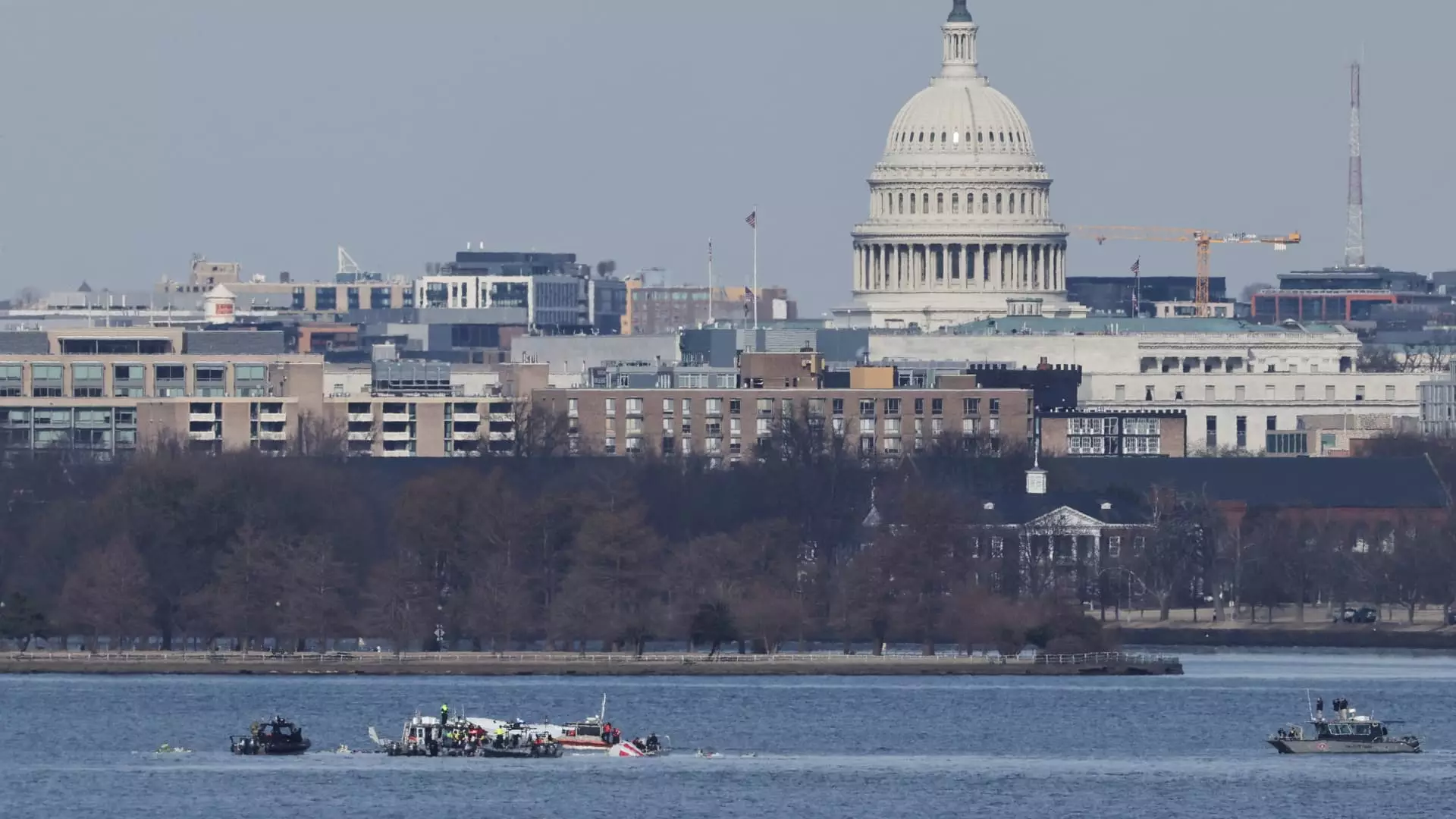On a fateful Wednesday night, a catastrophic collision occurred between a Black Hawk helicopter and an American Airlines jetliner over the Potomac River, leading to the loss of all 67 lives onboard both aircraft. This tragic incident raises critical questions about airspace safety regulations, the operational protocols governing military aircraft in civilian airspace, and the overall management of one of the busiest air traffic sectors in the United States.
Details regarding the crash, which took place near Washington, D.C.’s Reagan National Airport, are still developing as investigators sift through the wreckage and recover vital evidence. The American Airlines flight, Flight 5342, a PSA Airlines Bombardier CRJ-700, was on final approach, reportedly descending to about 300 feet when the collision happened. The Black Hawk helicopter, conducting an annual proficiency training flight, should have adhered to Federal Aviation Administration (FAA) regulations that restrict military helicopters from exceeding an altitude of 200 feet in the airspace around Washington D.C., particularly near the airport.
Both aircraft fell victim to a disastrous series of miscommunications and errors that culminated not just in the shocking explosion that followed, but in a significant breach of established aviation protocols. Such infrastructure is supposed to ensure safety for both military and civilian aircraft in densely populated airspace.
The Toll of the Collision: Search and Recovery Efforts
In the wake of this horrific event, emergency services have been working tirelessly to recover victims’ remains from the Potomac River. As of the latest updates, 41 bodies have been retrieved, with 28 of those positively identified. The loss of 64 passengers and crew aboard Flight 5342 brought attention not only to the severity of the disaster but also to the emotional impact on families and communities affected by this ordeal.
Fire and EMS Chief John Donnelly noted the daunting task faced by recovery teams operating in the aftermath of such a destructive event. The scene, which bore the scars of the fiery impact, presented considerable challenges for those tasked with finding and identifying remains.
Regulatory Response and Air Traffic Control Challenges
Given that this is the deadliest commercial air crash in the U.S. since 2001, an immediate response from authorities regarding air traffic control measures and helicopter flight regulations is critical. Transportation Secretary Sean Duffy indicated plans to impose stricter controls for helicopter traffic around the Reagan National Airport area moving forward. This news is particularly significant for the residents of Washington D.C., who, while accustomed to frequent helicopter flights, must now confront the reality of increased risks associated with such operations in congested airspace.
Moreover, it’s important to consider the ongoing staffing issues at the airport during the time of the accident. Preliminary reports suggest that air traffic controller staffing was not optimal, further complicating the incident’s circumstances. The implication here is troubling: the capacity to maintain safe coordination between military and civilian aircraft was compromised, a situation that demands thorough examination and rectification.
As investigators from the National Transportation Safety Board (NTSB) delve into the details of the crash, the recovery of flight data and cockpit voice recorders will be crucial in determining the series of events leading to this calamity. While the NTSB reports that they have “substantial amounts” of information, the investigation will require time to verify findings and draw accurate conclusions.
The statements made by officials, including former President Donald Trump, suggesting that the helicopter was operating above the permissible altitude, bring an air of scrutiny that complicates the investigation. Statements like these, issued during the early stage of the investigation, raise questions about the transparency and possible biases that can impede the work of investigators seeking to uncover the truth.
This tragic incident marks a distressing return to a narrative of aviation safety failures, as the aviation community was previously enjoying an extended period without fatal commercial crashes since 2009. The juxtaposition of increasing passenger traffic and the related need for heightened safety standards highlights the complexity of modern aviation management.
Moving forward, it is vital for regulatory bodies and the Department of Defense to reevaluate and possibly reform the intersection of military and civilian operations within congested corridors. As the investigation progresses, the hope remains that lessons learned will lead to lasting changes in policy, ensuring that the horrors of this collision do not repeat themselves in the future.
The Potomac River tragedy serves as a sobering reminder of the importance of rigorous oversight, communication, and the critical nature of maintaining strict adherence to existing aviation regulations for all airspace users.


Leave a Reply